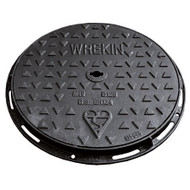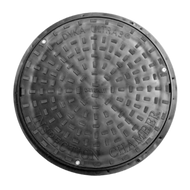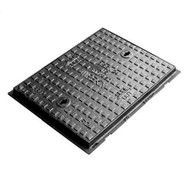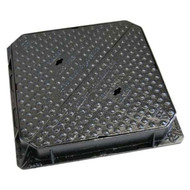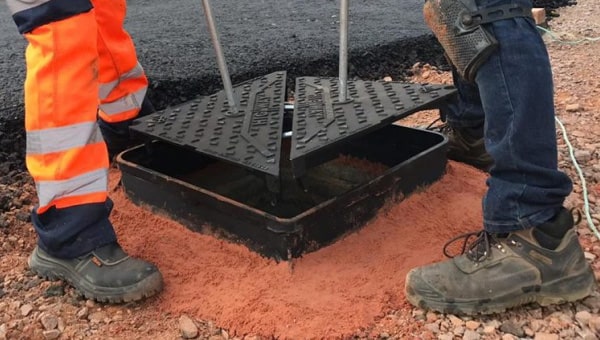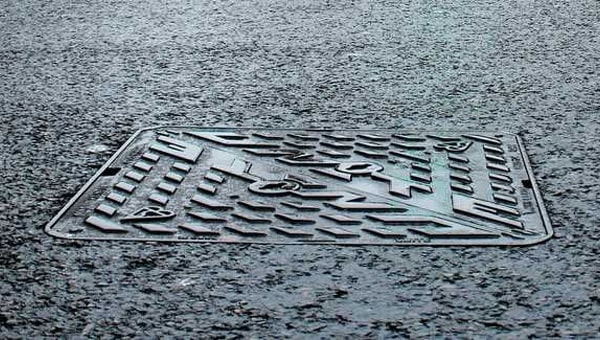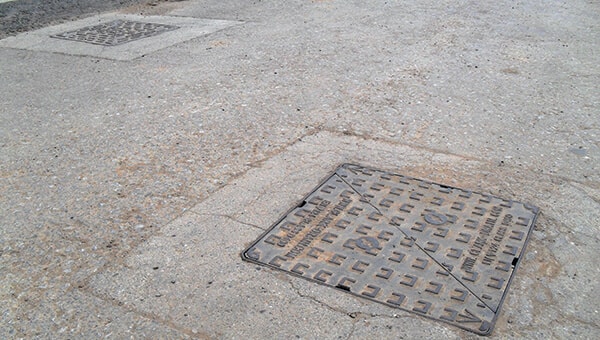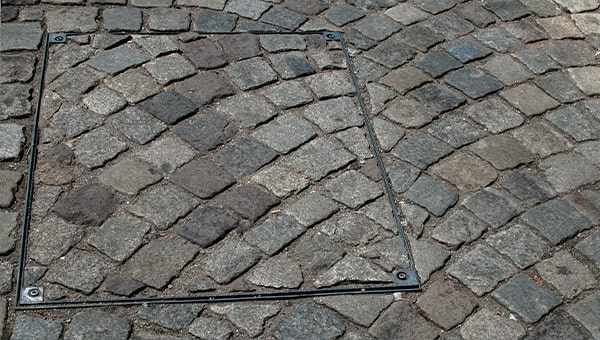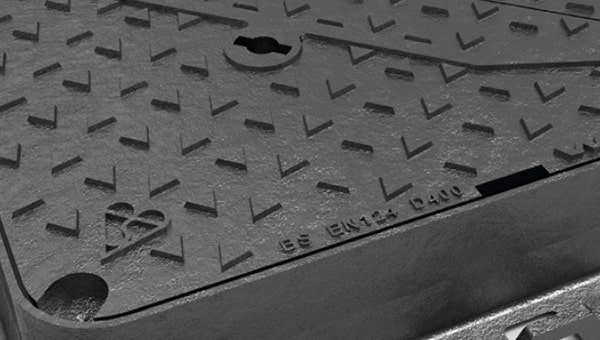The question of measuring a manhole is one of the most fundamentally important aspects of choosing a manhole cover - and yet it is often the greatest source of misunderstanding.
It is often thought that the size of a manhole cover should be measured by its outside dimensions — this is wrong — although logical and most other things in life get by this way, it's not the best way to measure a manhole cover.
Manhole covers are manufactured and sold by their clear opening size — the size of the manhole that's being covered — and not the size of the cover itself. This is so the cover can sit securely over the top of the manhole.
It doesn't matter if the cover is square or round — it is always the clear opening size you should be measuring.
As an example, one of our B125 circuluar manhole covers is actually 555mm in overall diameter (including its frame). Although, it's designed to fit a manhole that has a diameter of 450mm, so it is listed as a 450mm B125 Circular Manhole Cover. It's still worth keeping external dimensions in mind, as depending on whether you need to buy a new or replacement manhole cover it could impact how and where you can install it.
Measuring the clear opening
To measure the clear opening size for your cover you need to take the measurements from the inside walls of the manhole from one side to the other. If the hole is square or rectangular you will need to take both the width and height measurements (as opposed to just the width of a circular one). You will also need to measure the depth of the brickwork/asphalt that the cover will be sitting in, to ensure you get the most accurate measurement possible.
All measurements should be taken in mm. Once you have all your measurements you’ll be armed with all you need to choose the perfect size manhole cover for your application, as all manhole covers are measured in this way.
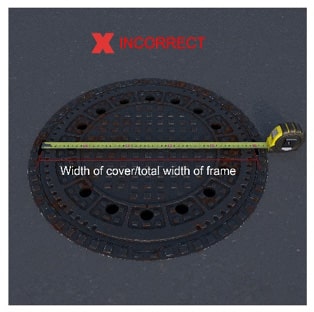
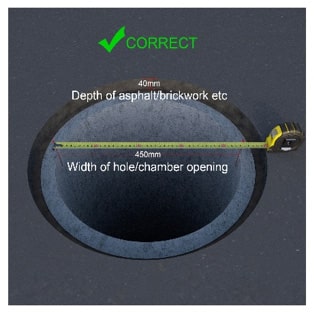
Manhole covers most commonly come in sizes from 300mm x 300mm to 1200mm x 1200mm, for square/rectangular covers, and with 450mm or 600mm diameters for circular covers. It is vital that your manhole cover’s clear opening size is at Least equal to that of the manhole; if the cover is too small it will likely fail (and probably fall into the hole). Oversizing the cover can be okay, but if it has reinforcing on its underside it may clash with the manhole chamber and leave the cover fitting incorrectly. For these reasons, it’s always considered best practice to source the correct sized cover to ensure the best possible fit.
Replacing an existing manhole cover
There are a few other things that are worth remembering when replacing a cover; if you are needing to replace a damaged cover it could seem tempting to try and find one that fits the existing frame. Unfortunately, if there’s damage to the cover, there’s likely damage to the frame too (or at least it is very difficult to ensure there isn’t). Given that safety is always key it is highly recommended that you replace both cover and frame if any damage is detected.
Covers for Plastic Inspection Chambers (PPICs)
If your manhole cover has an inspection chamber underneath it you’ll need to measure the diameter of the circular chamber, and choose a manhole cover and frame to match. It’s worth looking for one that is compatible with all major inspection chamber brands and, just like any other manhole cover, you must make sure it is correct load class.
Covers for Access Chambers
While all manhole covers are access covers, not all access covers are manhole covers.
Typically manhole covers are named for covers that top access to foul and surface water drainage systems, usually on top of concrete or plastic inspection chambers and risers, and found in trafficked areas. Access covers are named for covers that protect concealed chambers for electrical wiring, cabling, plumbing, heating and ventilation. These are found in light duty areas such as footpaths and pavements, and sometimes inside the floor of buildings.
Find out more about the differences between manhole covers and access covers in our other articles on manhole covers.

